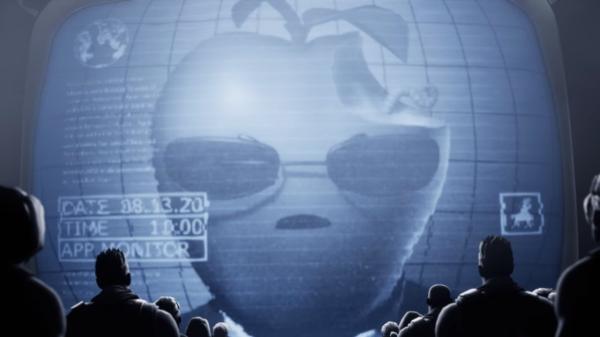-
Apr 5, 2024, 1:21 pm919 pts Special Content
Special ContentAs technology keeps evolving, so does factory management. The goal remains the same: increase efficiency, productivity, and safety. But the means to achieve it are changing radically. Welcome to the era of smart factories, and prepare to shape their future together.
Evolution of Factories
The concept of a factory has undergone a transformation over centuries. From primitive manual labor methods to more advanced mechanization introduced during the industrial revolution, human ingenuity never stopped finding ways to improve production lines. Factories became not only a symbol but an engine of economic growth, key players in shaping societal structures around the globe.
Innovation didn't stop at steam engines and assembly lines. Electronics and information technology brought new winds in the 20th century, opening doors to automation and data analysis capabilities before inconceivable. Gradually, newly formulated processes began decreasing reliance on manual labor while increasing precision and consistency.
The evolution of factories is a continuing journey as technology advances. The turn of the millennium brought people into an era characterized by interconnectedness and digital sophistication-the starting point for the smart factory concept.
Introduction to Smart Factories
These "factories of the future" which also go by the name of Industry 4.0 take the classic production processes and infuse them with some of the most advanced technology concepts such as artificial intelligence, machine learning, big data analytics, and Internet of Things.
Instead of slightly optimizing the preceding concepts, this model revolutionizes them in every possible way. Today machines can communicate with other machines regardless of location at the time in real-time.
The communication process makes way for the creation of vast arrays of data, which, in turn, are analyzed for adjusting the theoretical framework to current forms or making predictions of possible maintenance issues in the machines before they even have a chance to occur.
Next Generation Smart Factory Software
Smart factory management is brought to life through high-tech software, the brain behind this next-generation industrial revolution. Next Generation Smart Factory Software integrates machine learning algorithms and predictive analytics capabilities. It utilizes real-time data collected from sensors embedded in each piece of equipment on the shop floor.
New-age software doesn't only streamline factory operations-it revolutionizes them. With advanced AI at their core, these systems constantly learn from experiences and adapt to changing conditions. They also enable centralized control of different processes even across multiple locations, effectively bridging the gap between physical and digital worlds.
The result: higher productivity, fewer resources wasted, minimized human error, reduced downtime-the bonuses just keep coming.
Impact on Manufacturing Sector
The arrival of smart factories is a breakthrough moment for the manufacturing sector. It brings transformative changes to how businesses design and produce goods, deal with logistics, manage stock inventory or track performance metrics.
Real-time visibility into production processes makes it possible for manufacturers to identify inefficiencies as quickly as they occur-sometimes even sooner. This immediate feedback loop leads to swift corrections and therefore substantial cost savings on energy and waste. The quality control function also receives a substantial boost from smart technology with more precise detection capabilities leading to a better end product.
The potential of smart factories goes well beyond single-facility benefits. Their full implementation can offer novel solutions for large-scale challenges such as sustainable development or globalized production networks.
Data Driven Decision Making
In industry 4.0, data is paramount to decision-making. Modern manufacturers are using vast amounts of information generated by their systems to refine processes, improve efficiency and foster innovation in their operations. In essence, the new paradigm of manufacturing is based on data driven decision making.
The benefits of using available data for manufacturing decisions are clear; such decision tools provide companies with unprecedented power to predict trends and avoid risks. Manufacturers can use available data to anticipate the failure of equipment, refine machinery maintenance schedules or predict changes in patterns of demand. Ultimately, using predictive analytics can raise both shipping productivity and sales performance.
Thus, it is all too clear that this tendency should not be underestimated. The decision to change the definition of manufacturing and introduce a new data-driven approach will determine the future of industrial growth and the ways in which companies can drive sustainable growth.
Mechanisms of a Smart Factory
In the middle of a smart factory nestles a strong enough suite of numerous devices and systems, appropriately interconnected. Two major functionalities that this interconnectedness provides are the data collection and the real-time communication.
At each workstation and along every production line, sensors are in action to get the performance metrics. In this regard, the metrics may vary: whether it is the time of the machine running, productivity level, energy efficiency, the status of the materials and the resources, and plenty of other indicators.
Second, at a smart factory, everything is talking to each other through the IoT. As a result, a factory system becomes capable of self-organizing and self-optimizing the processes. Meanwhile, production bottlenecks may be timely identified and eliminated, maintenance may be foreseen before becoming critical, and the inventory management is boosted, as it is in place in real-time.
At the same time, in this highly interconnected environment, the advanced analytics tools are on standby. These tools are based on artificial intelligence and machine learning and assist in deriving useful conclusions from the operational data and presenting the information for decision-makers.
Along with the other functions, they are the base for the predictive capacities of that new type of factories, which is leading to the level of proactive solutions for problems that the world has not previously seen.
Potential Challenges and Solutions
Despite their numerous advantages, transitioning to smart factories brings its fair share of challenges. The high initial investment required for infrastructure overhaul, cybersecurity concerns given the interconnectivity amongst machines, and a potential skills gap amongst employees as roles evolve all pose significant hurdles.
Solutions may include phased implementation to mitigate financial risks, conducting regular cybersecurity audits to safeguard digital assets, and robust employee training programs to impart necessary technical skills. Engaging experts in Industry 4.0 can also prove beneficial in navigating these legal, technical, and human resource challenges efficiently.
Future Trends in Smart Factories
The smart factories of the future will be characterized by data-driven innovations, such as fingerprint recognition for secure access control and robotization for improved productivity and workplace safety. Digital twins, which are 3D digital representations, will help manufacturers to identify problems proactively and optimize asset management. Machine learning algorithms will be used not only for predictive machine maintenance but also for forecasting quality control to avoid future product recalls.
Overall production performance will also be partially based on the cloud and use shared data analytics and blockchain. The combination of other innovations, such as renewable energy, may also allow manufacturers to become energy self-sufficient and print products with energy taken from the solar panels on the plants' rooftops.
Thus, the use of fingerprint recognition will help to make factories more secure combined with robotics as a way to improve efficiency and machine learning technology as a way to predict maintenance requirements and decrease the probability of defects and recalls.
To Summarize
Smart factories are spreading exponentially, rethinking industrial processes, and introducing the era of the Fourth Industrial Revolution. Advanced systems are characterized by their intricacy, interconnectivity, real-time data streaming, and predictive abilities.
They also tend to optimize production processes, thus demonstrating unprecedented levels of efficiency and flexibility. Adjusting to the new type of industry requires facilitating decision making and skilling plus addressing cyber security concerns. Therefore, it is safe to say that the future of manufacturing is already waiting to be implemented, and exploring smart factories is a vital step toward it!
Trending Today on MacHash
MacHash is your real-time Apple news aggregator, delivering the latest headlines on Apple, Mac, iPhone, iPad, and iOS from top sources across the web.
As a powerful content discovery platform, MacHash continuously curates breaking news, product announcements, software updates, reviews, and industry insights related to Apple Inc. and its ecosystem.
MacHash helps you stay informed on everything from macOS and iOS developments to Apple Watch, AirPods, and the latest in tech and app innovation.
Access MacHash from your desktop or mobile device to explore, follow, and share the most trusted Apple news all in one place.















